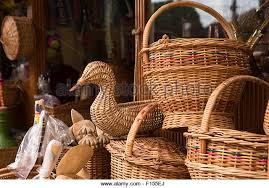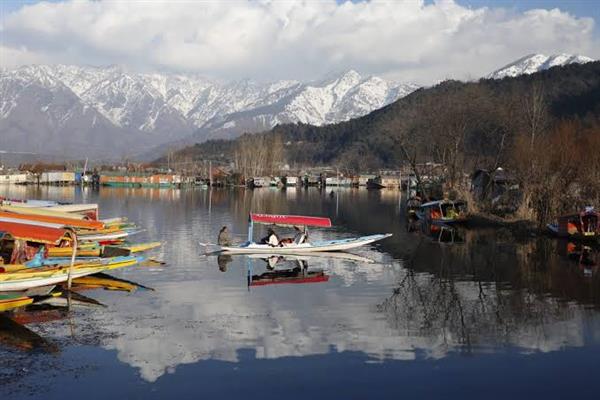Passionate about music, 26-year-old Shabir Ahmad Bhat of Kanil Mohalla, Chrar-e-Sharief always wanted to become a singer. But “fate did not support” him for that. Soon after completing his secondary education, Shabir has to leave his studies and start traditional family profession of kanil kaem (wickerwork) to provide some help to his economically distressed family.
Now for more than 10 years into the profession, Shabir says, the demand for wicker craft has so much dwindled that he is hardly able to make his ends meet.
A master craftsman, Shabir not only makes kangris but baskets, jars, wall hangings, decoration items and many more. He is very creative and keeps bringing in new designs. He is very good at making bridal and decorative kangris.
However, he says, traditional Kashmir wicker crafts have lost sheen and people no more demand wicker products as they get cheaper plastic replacements easily available in the market.
Hundreds of artisans across Kashmir associated with this craft are finding it hard to earn a decent livelihood. Shabir says no father wants his son to go for this traditional profession. “Only those who don’t find a better opportunity, like me, are forced to do the wickerwork,” he says.
It is the Kangri, the traditional fire pot used by Kashmiris for keeping warm in winters, that Shabir is making in bulk to earn his livelihood, as it is still used by the majority of people here. However, the demand is seasonal from November to March. And to keep the fire in the hearth burning, Shabir does all kind of manual jobs and labour work during offseason.
Shabir visits a number of places, including Arizal, Khagh, Shopian to procure the main raw material, willow twigs, and then processes it at his home. He colours some of his wickers in red, green, blue, etc. to make his decorative items.
He specialises in making customised bridal kangris, but says, demand for such products is not much nowadays, as the tradition of gifting kangri to a newlywed bride by her parental family has almost vanished. It takes him lot of time to complete a bridal kangri and needs him to be extra attentive and careful. But that is what he loves to do.
Shabir’s hometown, Charar-e-Sharief is considered as the hub of Kangri production in Kashmir. Charar Kanger is famous across Kashmir not only for its looks but durability as well.
While sitting in his room and listening to a Jagjit Singh ghazal or occasionally some Kashmiri sufiyaana music, Shabir spends one and a half hour in making a Kangri. But it is not more than Rs 200 to Rs 300, what Shabir makes for a whole day after crafting out many kangris.
But the amount is not enough to fulfil all the requirements of newly married Shabir.
The wickerwork in Kashmir is losing its charm day by day.
“The craft is dying silently, most of the Kashmiri people have given up on the wicker decorations, it’s just the tourists who are keen about it,” says Shabir, adding, it seems hard to keep this form of art alive, despite so much hard work.
The Goods and Service Tax (GST) has heavily impacted his earnings. Though the tax rate was, later on, reduced from 12 percent to 5 percent, the brokers do not increase Shabir’s profit margin after they had pulled it down. “Though the government claim we are not affected, but indirectly it’s us who suffer most.”
Shabir wants people to remain in touch with this craft as this is a part of Kashmiri culture. AS he enjoys his works and is hopeful that things may change one day.
Famed Kashmir’s traditional wicker craft struggles to survive






